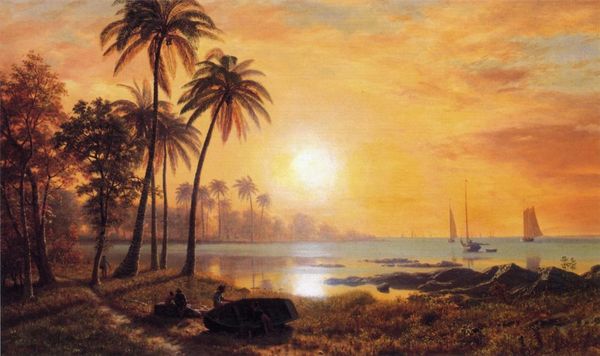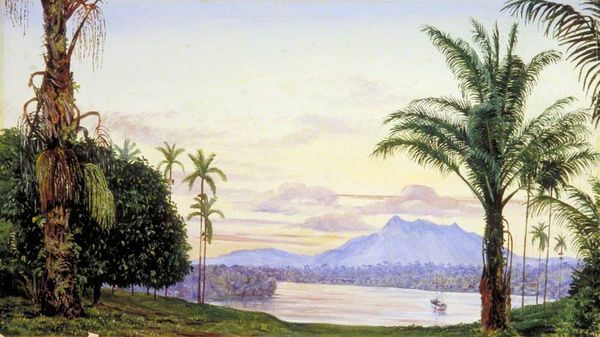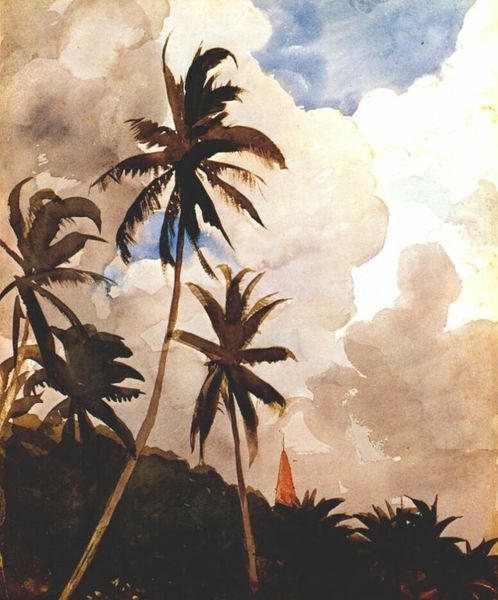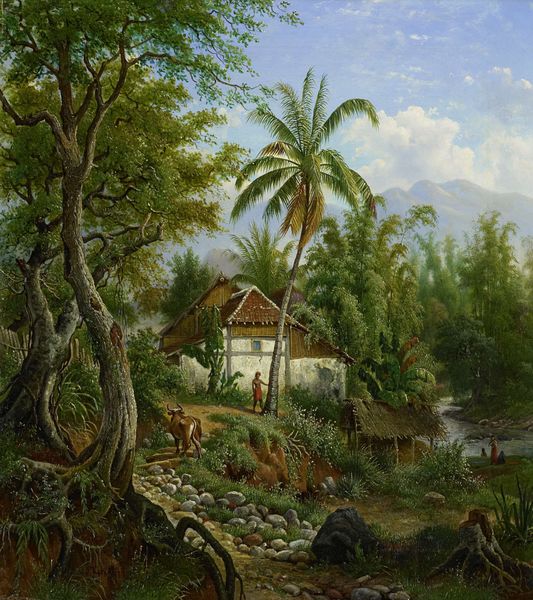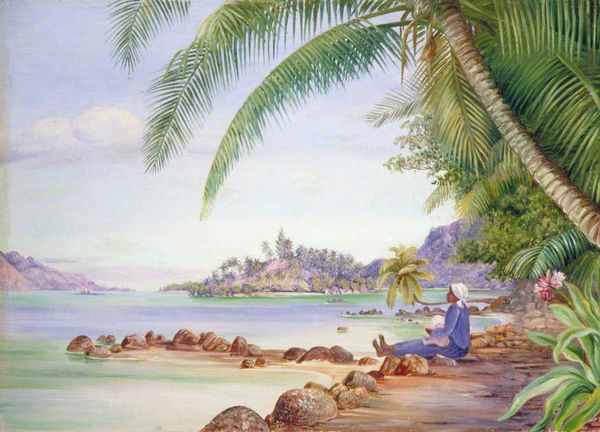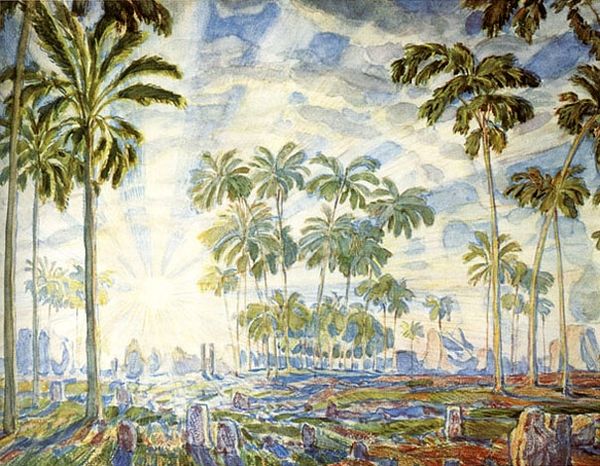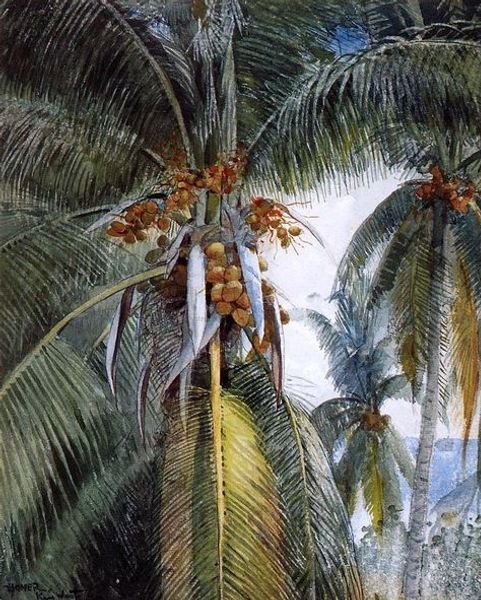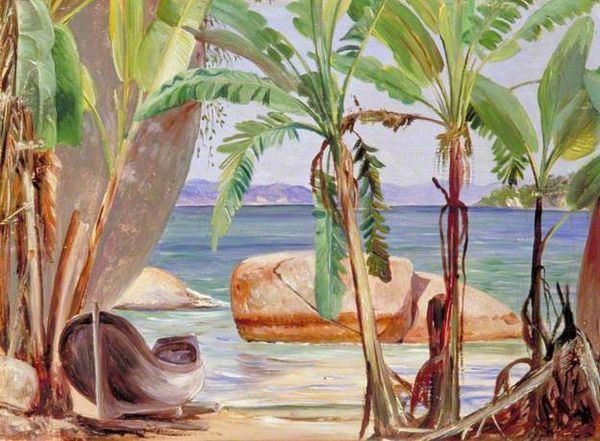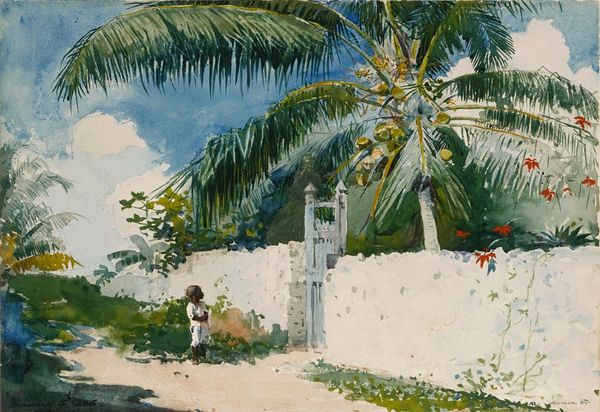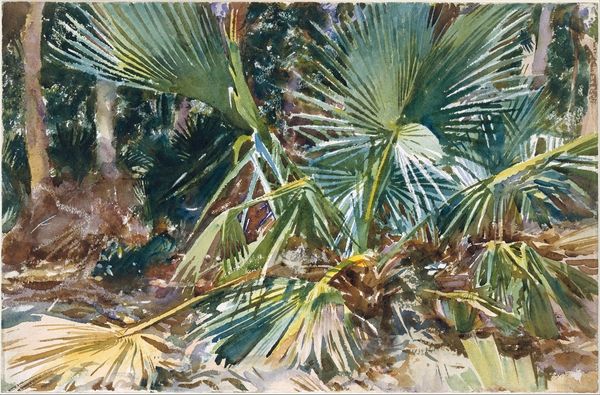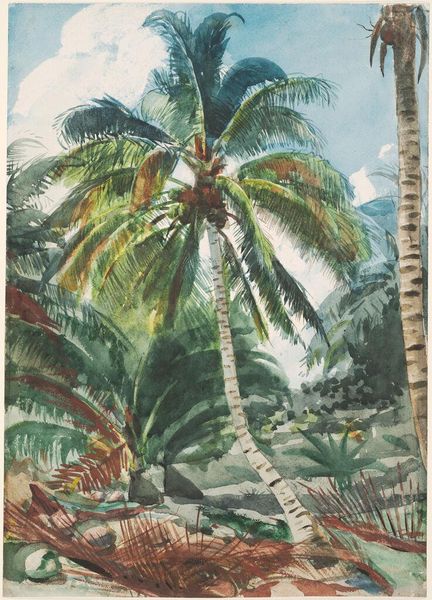
plein-air, oil-paint
#
plein-air
#
oil-paint
#
landscape
#
figuration
#
romanticism
#
cityscape
#
realism
Dimensions: 34.92 x 48.9 cm
Copyright: Public domain
Editor: Here we have "Tropical Landscape" by Albert Bierstadt, an oil painting, the date of which seems to be unavailable to us. The initial impression I get is one of dense foliage meeting a tranquil seascape. The contrast is very captivating. What's your take on this artwork? Curator: It's tempting to view this landscape as a simple record of a place. But Albert Bierstadt operated within a specific cultural context. During the 19th century, landscape painting served ideological functions, particularly in relation to expansion and manifest destiny. Do you see echoes of that in this "Tropical Landscape?" Editor: I hadn't considered it that way. Is it like the painting becomes a tool for justifying colonialism or portraying a land as ripe for the taking? Curator: Precisely. Artists like Bierstadt often depicted landscapes not just as they were but how they wanted them to be seen. This image might emphasize the beauty of the tropics while subtly downplaying any existing settlements or indigenous presence, contributing to a particular narrative about the "untouched" land. Think about who gets to control the image and what purpose that control serves. Editor: That makes sense. The angle from which we view the ocean in the background creates a picturesque destination point, ready for exploration. This could very easily romanticize these landscapes for audiences back home. Does the absence of an available date impact our understanding of the artwork's place within these colonial narratives? Curator: Definitely. Without a specific date, pinning it down within Bierstadt’s larger career becomes trickier, although it remains consistent with some of his well-known landscape painting during the height of the Romanticism movement, during which America experienced accelerated westward expansion, displacing multiple indigenous settlements. Editor: Thank you for shedding light on how this work fits into a historical and cultural narrative. I wouldn't have thought of it that way. Curator: My pleasure. Examining art this way lets us reveal powerful narratives about place and control.
Comments
No comments
Be the first to comment and join the conversation on the ultimate creative platform.
